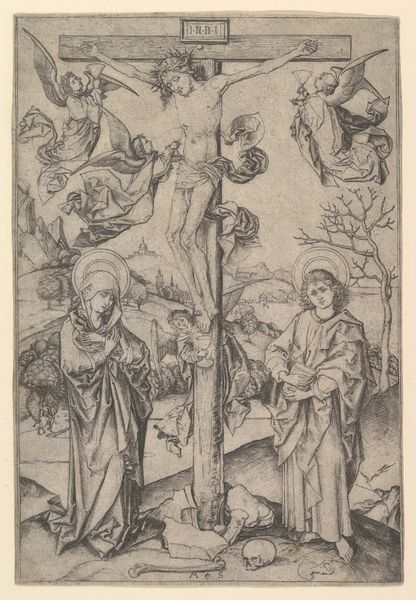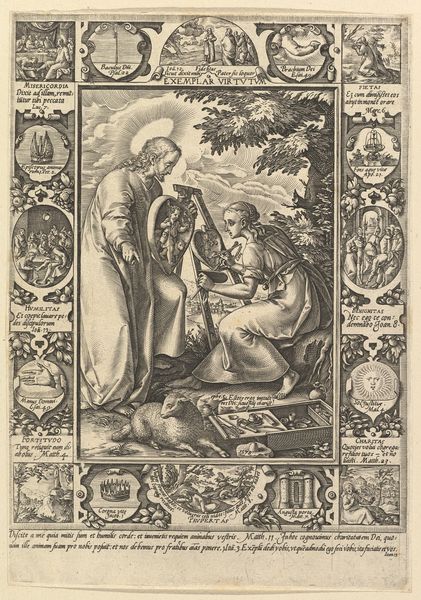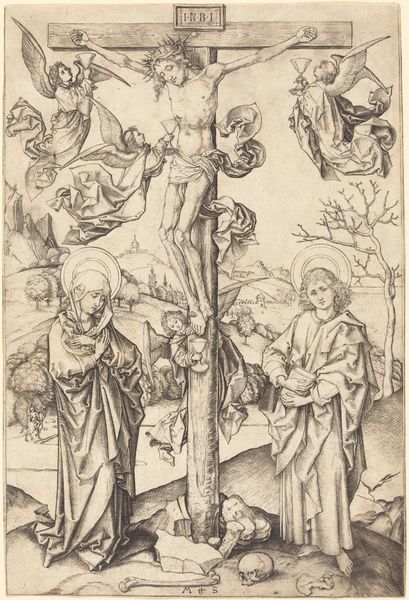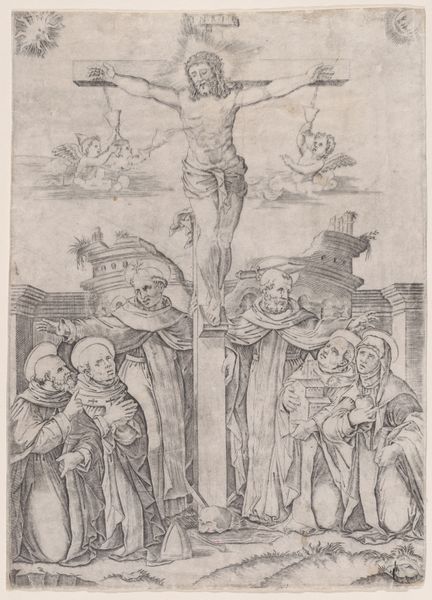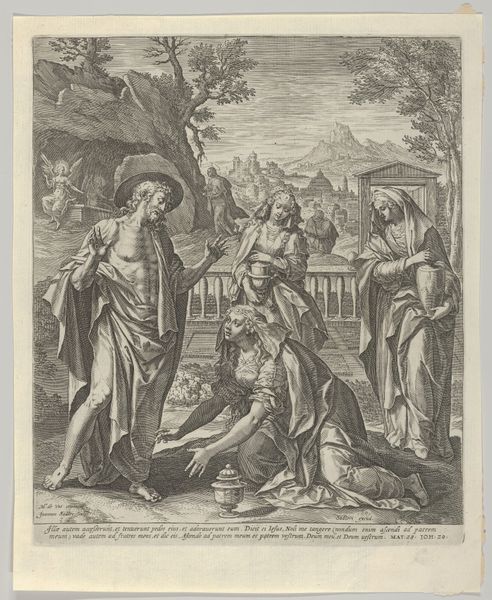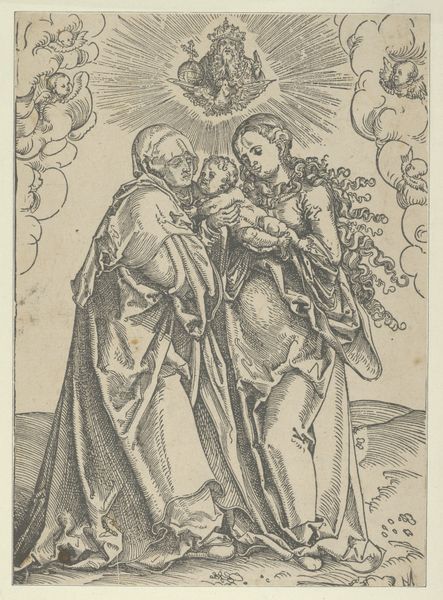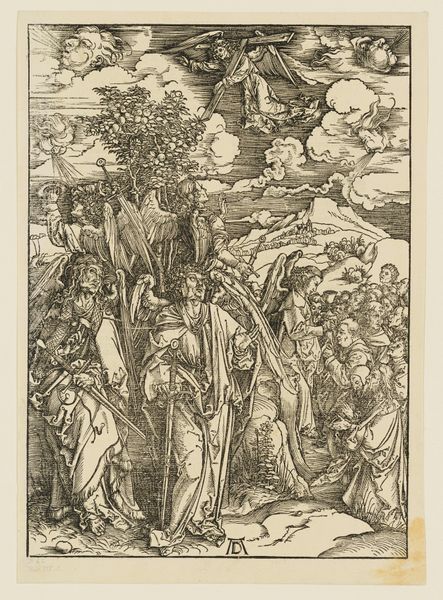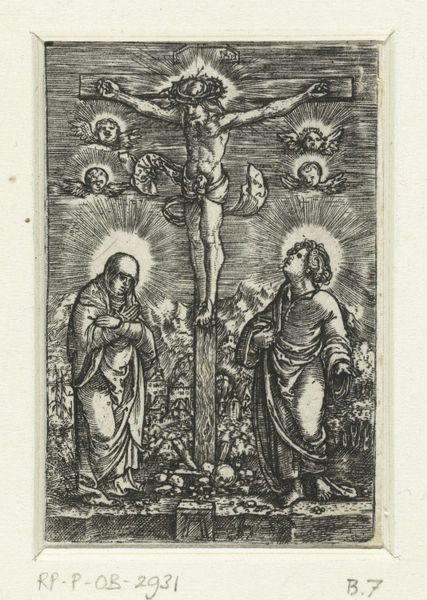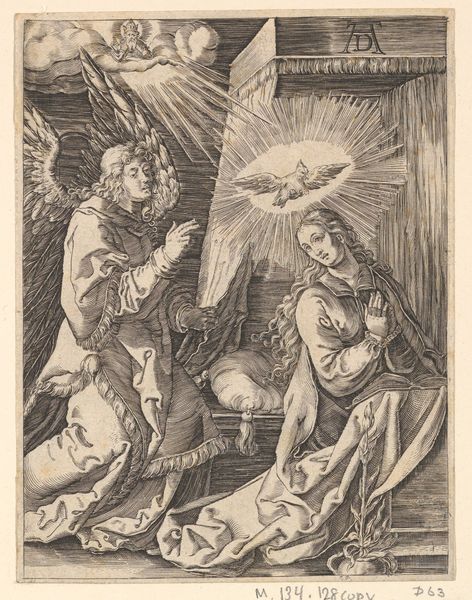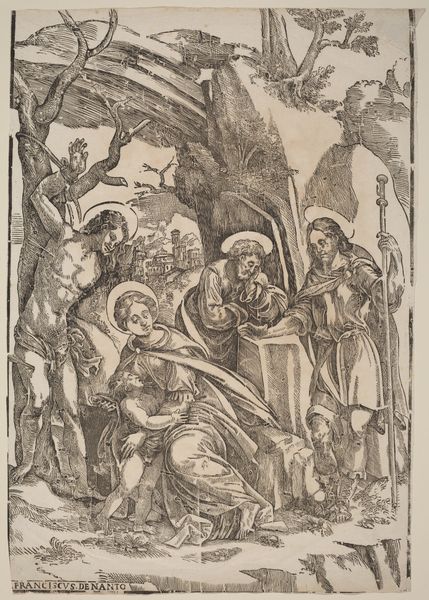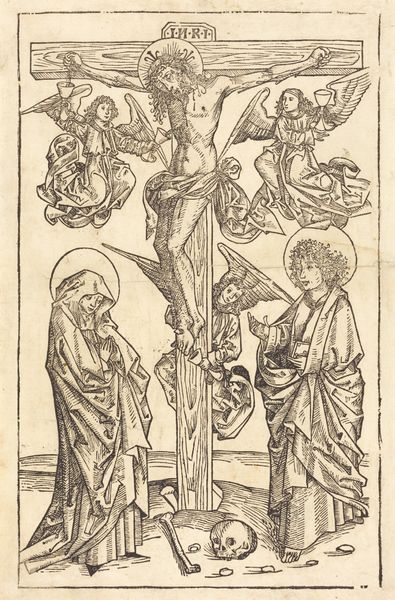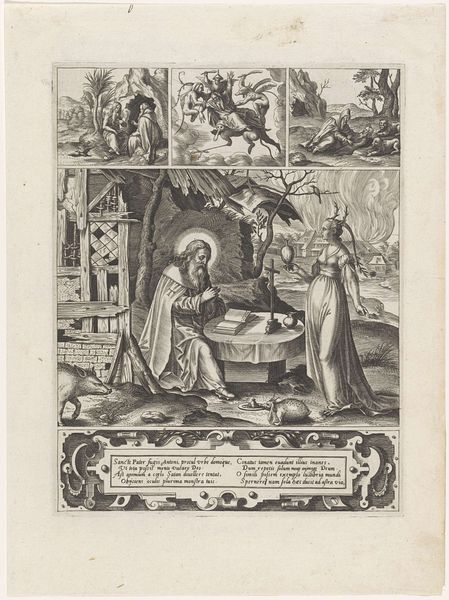
drawing, paper, ink, engraving
#
drawing
#
ink drawing
#
medieval
#
narrative-art
#
figuration
#
paper
#
ink
#
history-painting
#
northern-renaissance
#
engraving
Dimensions: 271 × 190 mm (plate); 320 × 235 mm (sheet)
Copyright: Public Domain
Curator: This is Anton Gerbel's "Christ on the Cross With Two Angels," an ink drawing completed around 1481. You can find it here at the Art Institute of Chicago. Editor: It's stark, isn't it? Those fine, almost fragile lines…it feels more like a whisper of agony than a shout. The desaturated tone reminds me of winter landscapes; bleak, and somber, you can almost feel the chilling breeze. Curator: The work exemplifies Northern Renaissance style with its emphasis on intricate detail. Consider the delicate cross-hatching, the proportional imbalances. It is all rendered on paper, underscoring its textural importance. Gerbel certainly focused on linear clarity. Editor: Those angels, though! Aren’t they fascinating? Like crumpled bits of fabric floating around him; one holding a cloth. But why? The angels' expression isn't what I expected, and adds another layer to the image. Their downcast eyes contrast with Christ’s… is it resignation? Curator: One may say their actions provide narrative support, fulfilling traditional iconographic expectations, if you’re coming from the proper understanding, the angel offers the sudarium. Also the presence of Mary and St John in the foreground suggests narrative significance of grief and reflection at Christ’s sacrifice. Editor: True, I also note how small in scale those figures are within the setting around the central crucifix. As a result, the viewer feels both intimately involved in the suffering of Christ, and isolated given the lack of emotional reciprocity in the rendering of grief. Also the stark skull there as the foot of the cross...a haunting detail, no? Curator: Indeed, the skull reinforces a specific didactic message regarding mortality and atonement within the overall structure and symbolic schema. Gerbel is pointing the viewer toward a specific path of interpretation, a conscious mediation with the divine. Editor: Well, however mediated it is, there's something raw here too. This isn't just a pretty picture with perfect lines; it's loaded with feeling. You’re left pondering the artist, their world, and their convictions... and how it relates to one's own existential experience. Curator: I concur that it possesses great strength within the established framework of its visual language and religious content.
Comments
No comments
Be the first to comment and join the conversation on the ultimate creative platform.
